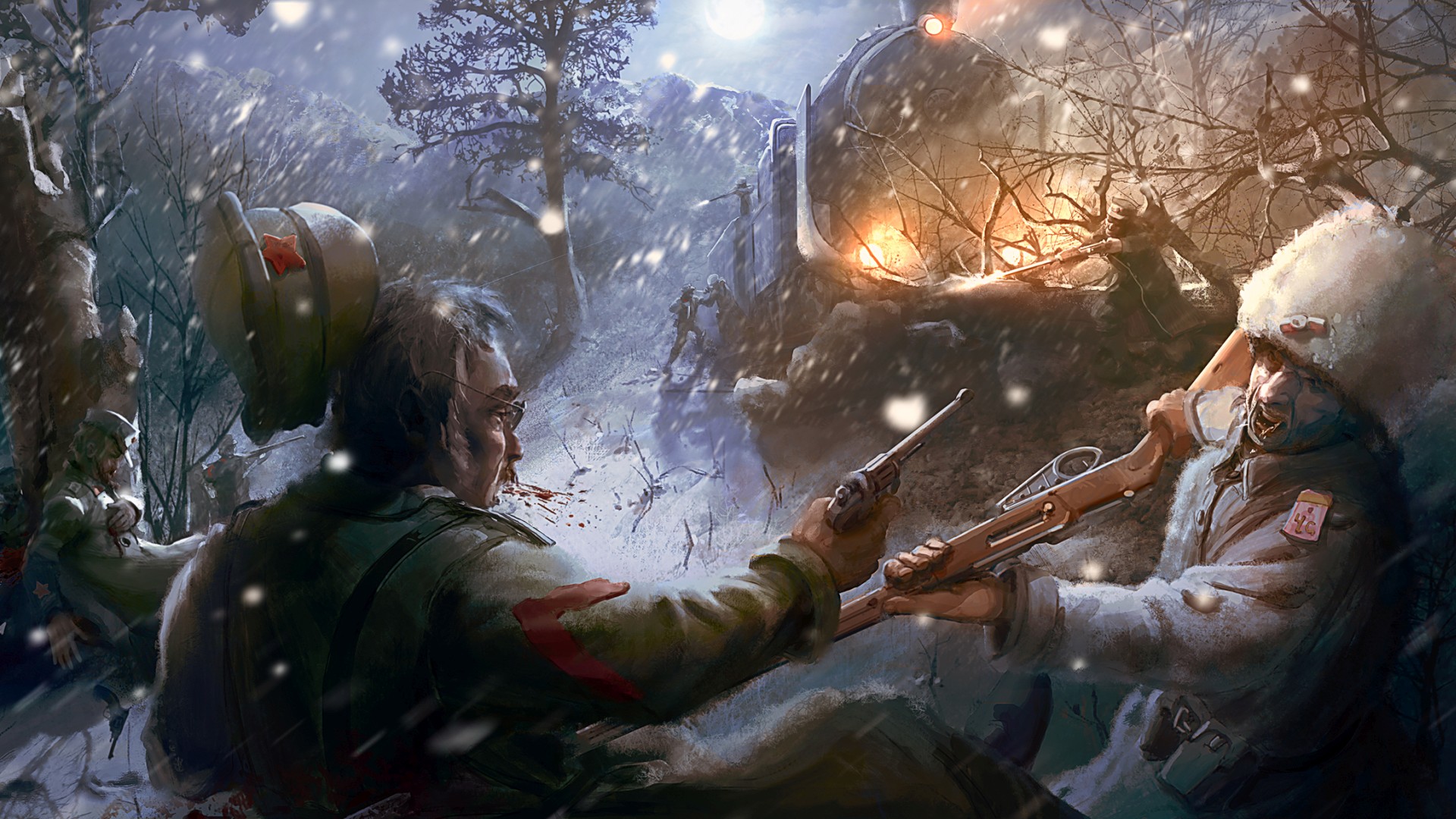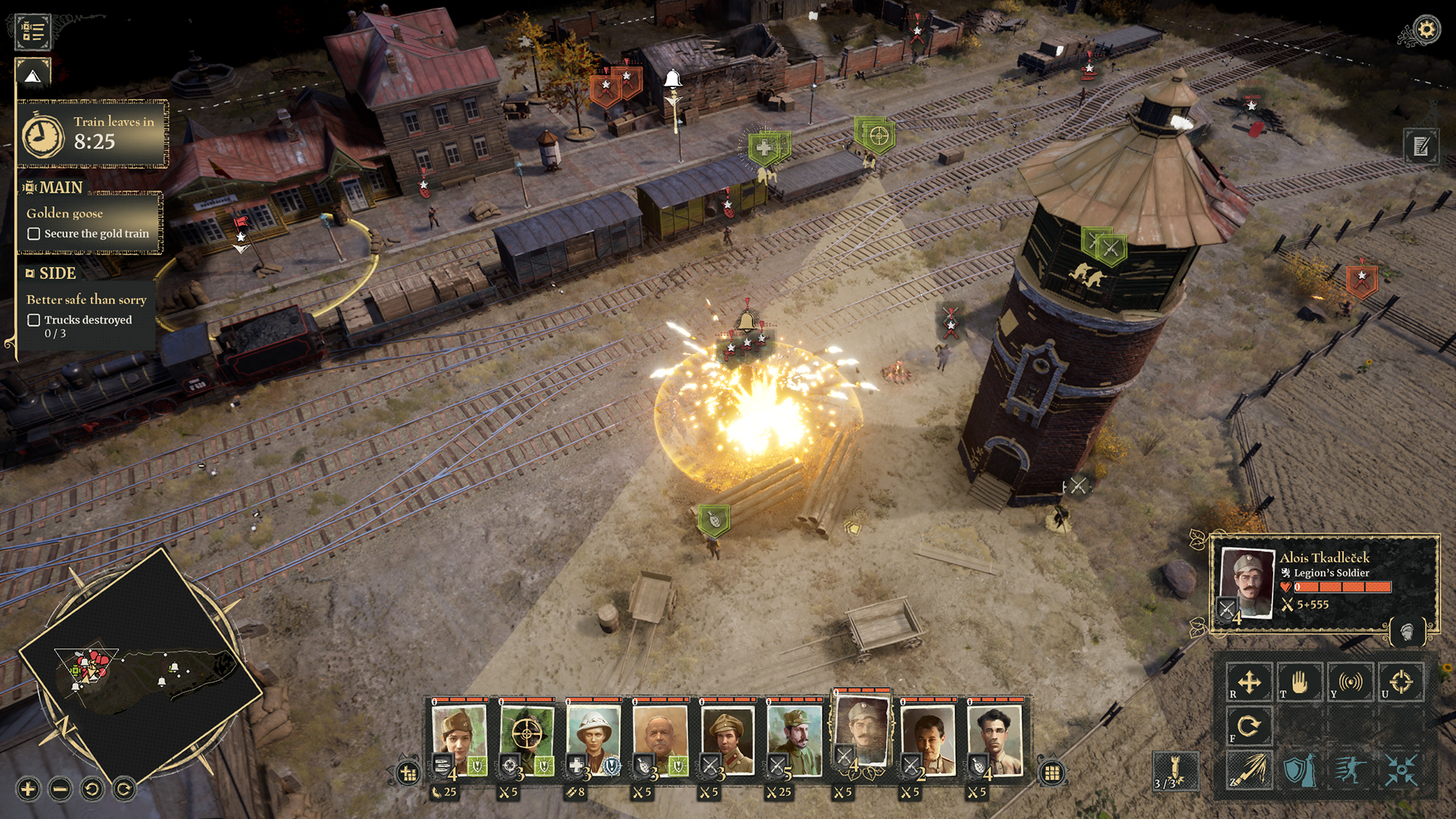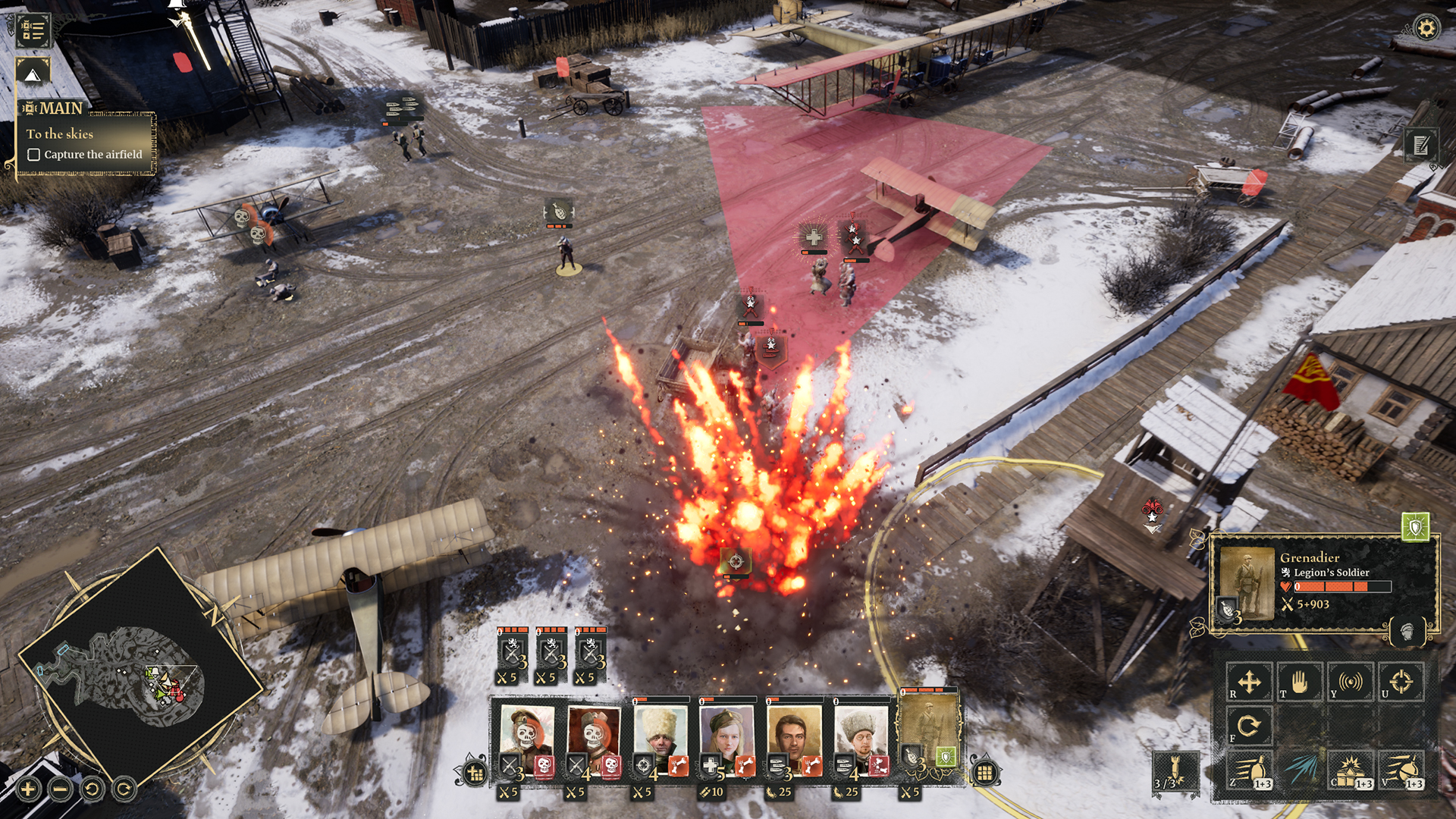
As you'd expect from a game about guiding a steam locomotive filled with Czech soldiers through the Russian Civil War, there will be points in Last Train Home when no amount of coal in your engine will help you escape the wrath of the Bolshevik revolutionaries. In these situations, you'll need to toss aside your shovel and grab the nearest rifle, leading your squad into the game's fierce tactical combat missions.
During your journey, you'll embark on both large-scale story missions and smaller side scenarios ranging from rescuing local farmers from Bolshevik raids, to gruelling street battles in dense urban centres. In both cases, you'll only bring into these missions what you take with you. Every squad member, every weapon, every bullet is accounted for at both a strategic and tactical level. If you run out of pistol ammo in one mission, your medics won't be able to fight back until you pick up some more. If a soldier is injured while repairing your train, they'll carry that wound into battle unless healed.
You can take up to 10 legionaries into a mission with you, but more important than the number of soldiers at your disposal is the balance of your squad. Just as legionaries can work different jobs on the train, they can also play different roles in battle. Riflemen form the backbone of your squad, machine gunners and medics are essential support units, scouts can take out enemies from afar. As for grenadiers, well, the clue's in the name.

But these units are defined by more than the weapons they wield, each has unique abilities that can be used to gain an edge in combat. Machine gunners can deploy their weapons to cover specific areas of the battlefield, and lay down suppressing fire to halt the enemy in their tracks. Riflemen, meanwhile, can rush entrenched enemy positions with a bayonet charge, dashing through gunfire to shank that Soviet sniper in the stomach.
Precise use of your soldiers' abilities can turn the tide of a battle. But commanding soldiers in the heat of a fight isn't easy. To help you issue your orders, Last Train Home sports a tactical pause system. This lets you freeze the action to direct your units individually, issuing one or several commands to each soldier to plan elaborate manoeuvres.
Since your soldiers are vastly outnumbered, however, the best tactic is to avoid combat as long as possible. Stealth is one of the most important weapons in your arsenal. All units can be toggled to move in "silent mode". This reduces their movement speed, but also decreases the chance of them being heard or spotted. While in silent mode, your soldiers can sneak up on patrolling Bolshevik guards, and whack them on the head to eliminate them without triggering a gunfight. You can also use your scouts to recon nearby areas, letting you plan a streak of silent kills, identify enemy alarm systems to disable, or set up a devastating ambush.

It's important to note that a successful mission isn't just about what you take with you. It's also about what you bring back. As you explore the game's maps, you'll find resources scattered about, from bags of coal to crates of ammo. Scouring maps for these resources can be hugely beneficial to your overall journey. But as with the broader game, this comes with its own risks. Every battle you fight risks your soldiers being wounded, and while you medics can patch up injured soldiers, it takes time and resources for them to heal fully. Hence, you'll have to judge whether it's worth risking your soldiers' health for a few extra strips of cloth.
And if all else fails, you can always bring your train into the fight. At least, indirectly. Should you acquire an artillery car and the shells to use it, then you'll be able to bombard enemy positions from a distance during missions, saving your squad from a bloody skirmish. Now that's what I call steam power!
Last Train Home's tactical combat is fluid, flexible, and fast-paced. Your decisions in the moment will not only affect the effectiveness of your soldiers in battle, but also the prospects for your entire steam-powered odyssey across revolutionary Russia.







